A Guide to Create Quality and SEO Friendly Content
As users, we search many queries on Google every day with different intentions. Sometimes the query is about a product we want to buy and at other times, we want to find information on a certain topic. With queries for informational purposes, we generally want to encounter quality and trustworthy content.In fact, it would be fair to say that this is the main purpose of using Google. So, how should you create content to reach your target audience and get better rankings in your target queries?
In this guide, we will address the key points to create SEO-friendly and quality content.
Relationship between Content and SEO
Several billion queries are made on Google every day. It can be said that a significant portion of these queries are "informational queries", which are performed with an aim of obtaining information on a certain topic.
Today, the number of people who conduct their research using sources such as encyclopedias has significantly decreased. Now, everybody uses Google or other search engines to perform research about a topic of interest and instantly reaches numerous results.
As you know, the majority of users click on the top search result when they search a query, which is where SEO comes into play. In order to reach more of our target users, we want to be at the top of the search results pages that we call “SERP” for short. Although we know that Google takes a number of signals into account to list the websites with these rankings, it would be fair to say that content is one of the most important factors, especially for informational queries. Therefore, it is necessary to have quality and SEO-friendly content to rank high in search results.
Why Produce Content?
We always highlight the importance of content for content websites. But why is it so important for other kinds of websites, too? In addressing these points, we would like to share some insightful statistics about search:
- On Google, more than 40,000 queries are performed per second and more than 3.5 billion queries per day (Internet Live Stats).
- As of 2020, there are more than 600 million blogs worldwide (Growth Badger).
- 70 million posts are published by WordPress users every month (WordPress).
- 77 million new comments are made by readers on blogs every month (WordPress).
- 55% of marketers say that their blog is their most important marketing channel (Hubspot).
- Businesses that have a blog get 55% more traffic than those without one (Hubspot).
- Companies with blogs attract an average of 67% more leads per month than those without one (DemandMetric).
- 59% of users conduct research on Google before making a purchase decision (Think with Google).
The last statistic is quite remarkable, isn't it? Actually, I can personally say that it is not that surprising. Because, like many users, I always search queries before buying a product or service whose price is above a certain level. Almost all of this research is conducted online. This is exactly why content is as valuable for e-commerce sites as it is for any other website.
Tips for Quality and SEO-Friendly Content
There are many aspects you need to take into consideration while creating quality and SEO-friendly content. Therefore, I divided this process into three as “Before Creating Content”, “While Creating Content”, and “After Creating Content”. First, let's look at what you should pay attention to before creating content.
-Before Creating Content
As I mentioned above, I'll address a number of points on this subject. First, let's talk about what to take into account before creating quality and SEO-friendly content.
Keyword Research
The first step in the content creation process is keyword research. We perform this analysis mainly to decide which subject to produce content on or to find out what queries are made by users related to the subject we choose. In order to perform the keyword research successfully, we need tools, as in many other instances. The most prominent of these tools are Ahrefs and Semrush, which are the most popular tools in the SEO world.

For example, if you want to create recipe content, you can easily find user queries and search volumes of the keyword “recipe” using Ahrefs and Semrush. By doing so, you will be able to see which recipes users are the most interested in.
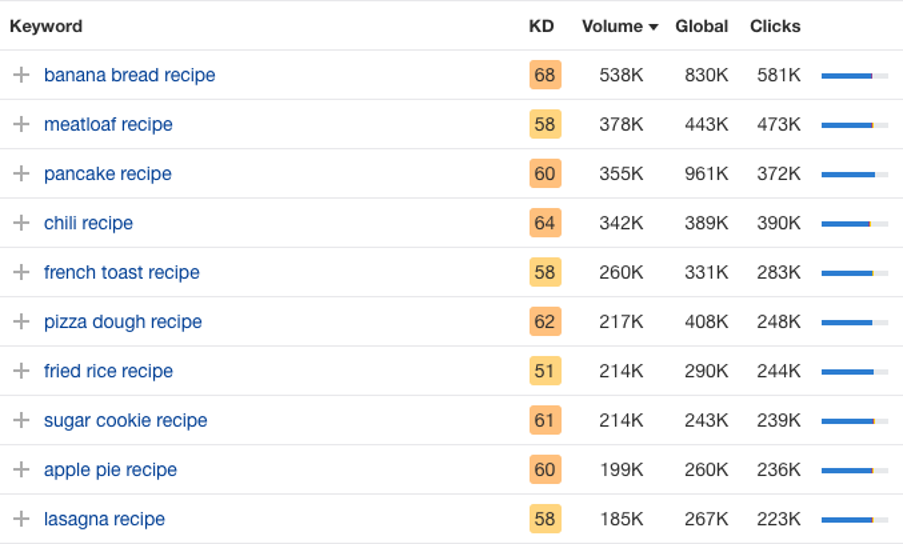
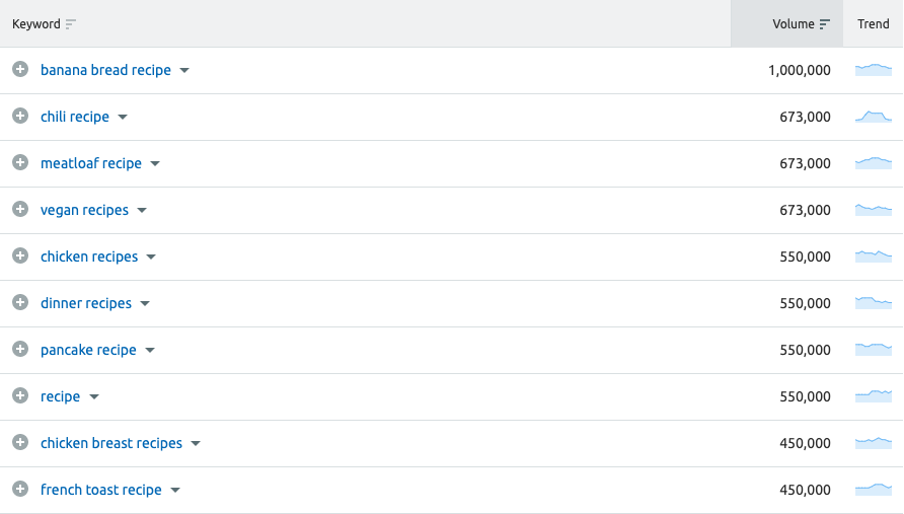
Also, both Ahrefs and Semrush offer many different modules, through which you can discover new keywords as well. In addition, if you have not decided on the topic you will create content on, you can use the same tools to see which pages your competitors receive the most traffic from. The data you will obtain from these tools can also help you decide the subject on which you will create content.

I mentioned popular tools like Ahrefs and Semrush. Unfortunately, however, they are paid tools.


These tools can become inaccessible for those who are not an agency employee, a freelancer, or working in a company with a high tool budget.
In this case, you can also utilize free tools such as Ubersuggest and Keyword Tool. In addition to these tools, I would like to mention some methods briefly that you can use for free.
- Google Trends
Thanks to this tool, you will be able to see the search trend of a query within a specific period for free. Thus, when you want to target a given query, you will be able to schedule the posting dates of your content in line with the data you will obtain using this tool.
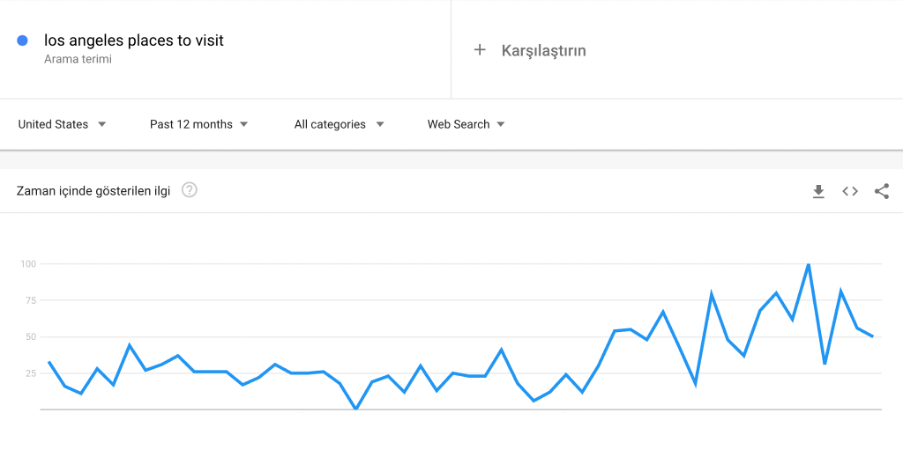
You will also be able to identify the trending queries in a given period using Google Trends, as well as daily and real-time search trends. The data you will obtain from Google Trends can help you during content creation.
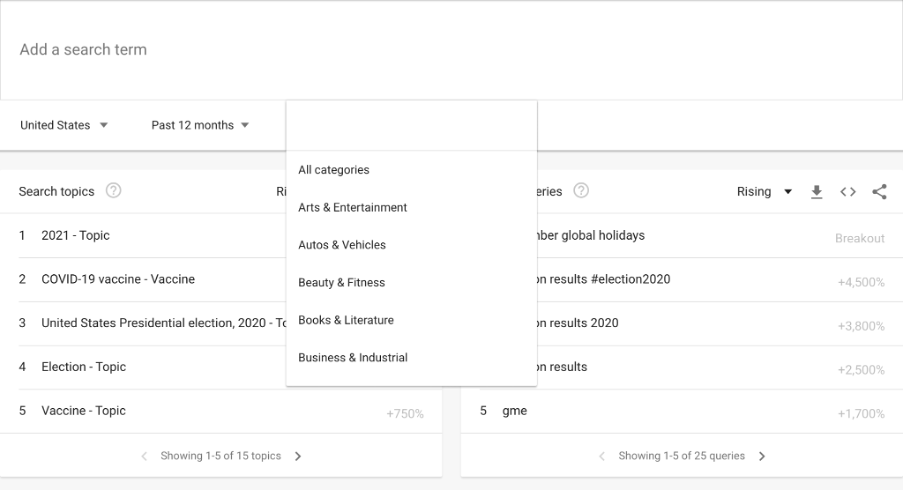
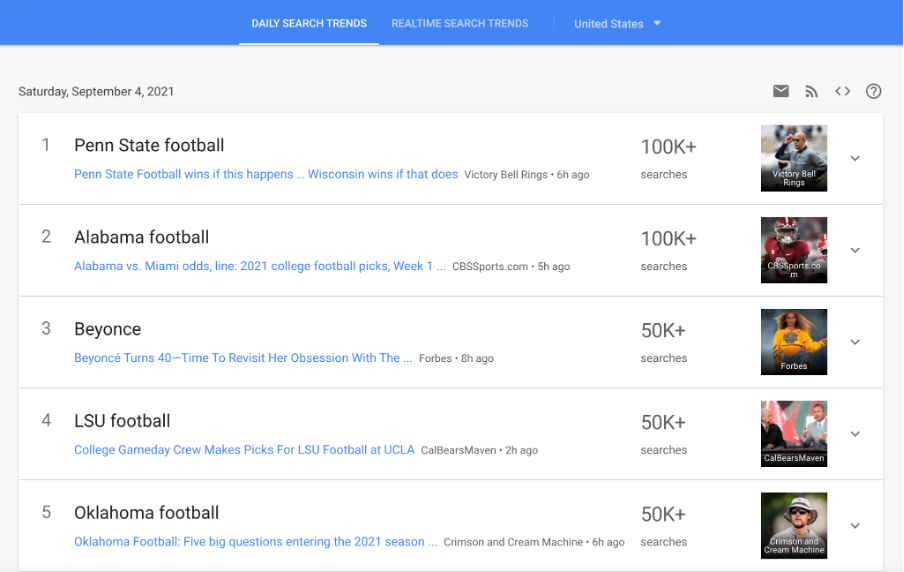
If you want to reach information regarding the most popular queries on a topic, you can also utilize Google itself. While performing a query, Google provides you with some recommendations on how to type your query. These recommendations are given based on similar popular queries performed before.
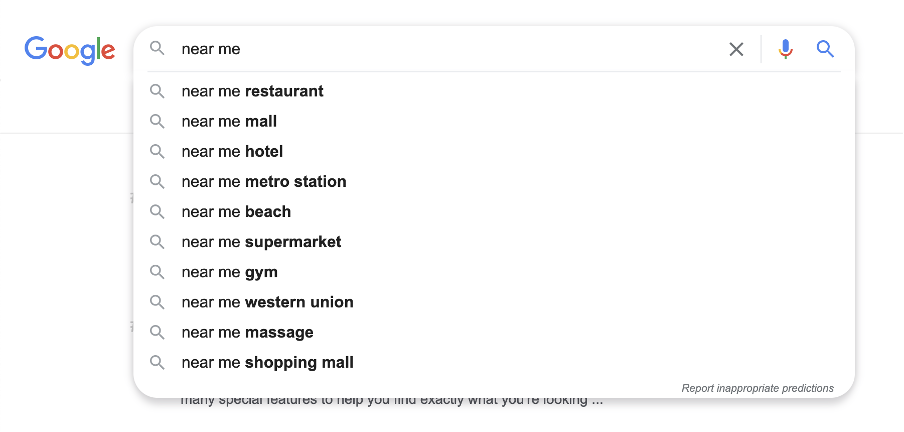
Also, you can use search operators like below to identify popular queries about a topic.
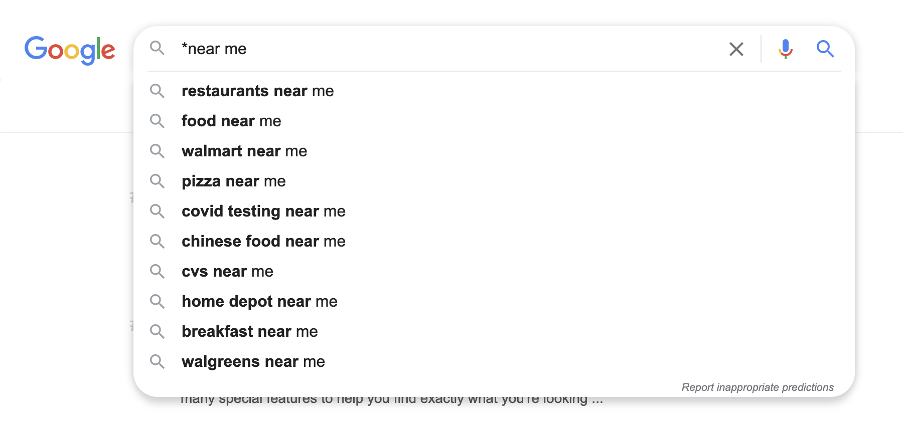
In addition, when you perform a search on Google, you will see the "Users also asked" section on the results pages. Here, you can see the frequently asked questions by users about the topic.
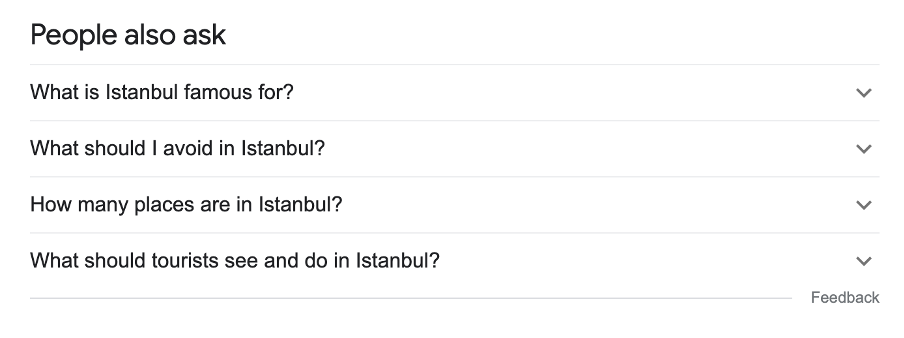
Finally, you can also utilize the “Related searches” section at the bottom of the results pages, where you can see the popular queries about a given topic.
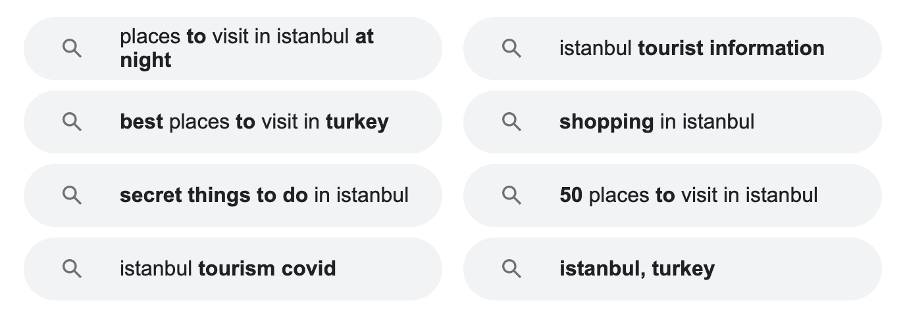
- Extensions
You can also use free Chrome extensions to find out the search query volume of a topic. For example, Keyword Surfer enables you to see the search volume of a query on Google and other user queries related to that topic.

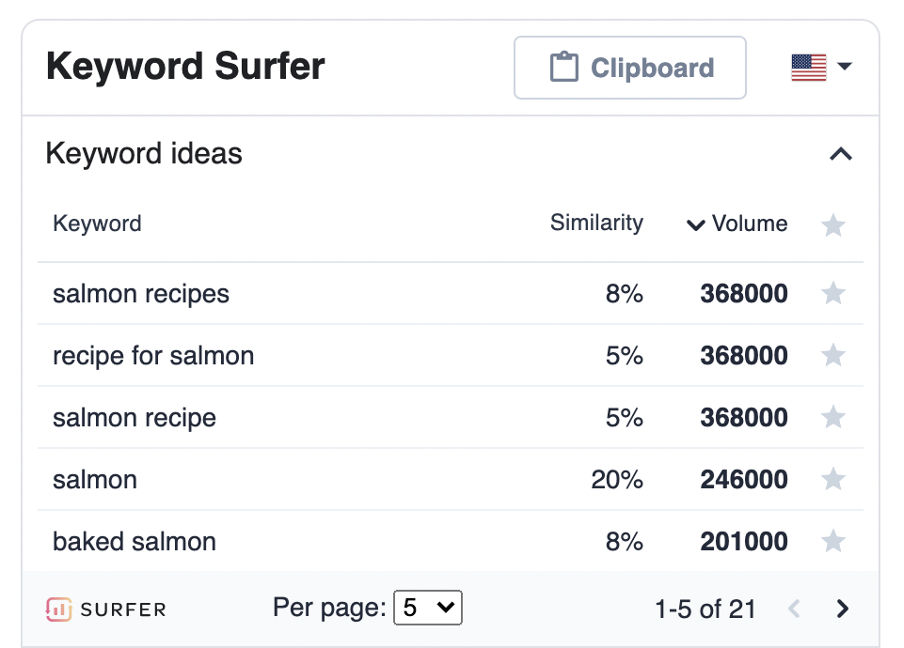
Knowing Your Target Audience
Let's say you have decided on the subject about which you will create content using the methods and tools I mentioned above. What comes next? First of all, research needs to be done, specifically on the needs of the target audience. In other words, you need to determine which audience will be targeted with the content, the common characteristics of the individuals constituting this audience, and their likes and dislikes. For example, while creating content about a luxury resort, you should take the financial situation of the targeted audience into consideration. Or, in an otherwise case, if you are creating content about free campsites, recommending expensive activities to users in that content will not be the best course of action. On the other hand, recommending free or affordable activities is likely to lead users to read the entire content and be satisfied with it. In short, being mindful of these points while creating content and analyzing the target audience correctly will help users to get the best out of the content.

Deciding on the Purpose of Creating Content
It is a good idea to decide on the aim of creating content beforehand, and then to reflect on this decision in the content. The aim can be to increase brand or personal recognition or to promote a product or service. At this point, if you aim to increase brand or personal recognition, you can mention the brand or yourself in the content in a way that will not off-put the user. Likewise, if the aim is to sell a product or service and create content related to that product or service, you can address it in a way that does not off-put the users by making them think that it is an advertisement trying to influence them.
User Intent
The intent in the targeted user query should be correctly analyzed. In other words, it is necessary to find out what kind of results users want to encounter after their query. Basically, there are four types of user intent, as you can see below: In this step, you should analyze the user queries related to the subject on which you will create content and find out which of these intents is behind these queries. Afterward, you should create your content in accordance with this intent.
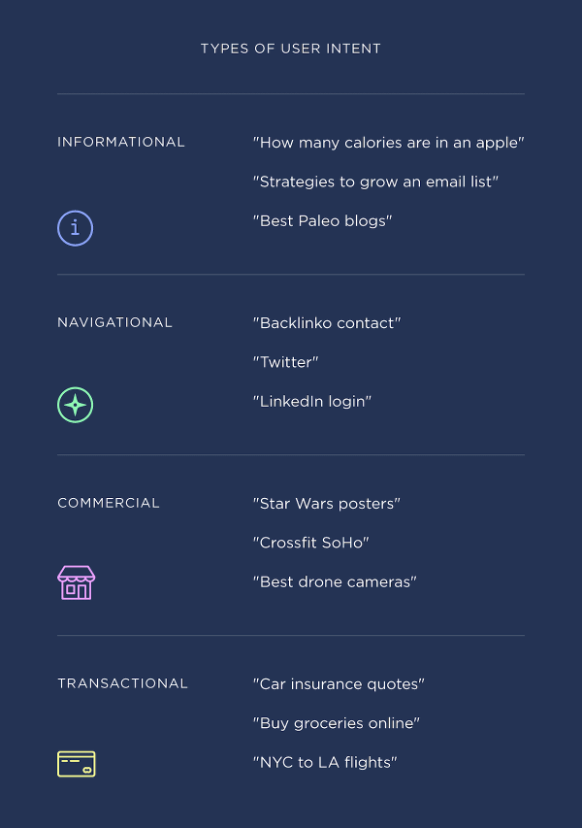
image source: https://backlinko.com/hub/seo/search-intent
What Does Google Understand?
It is useful to examine the results page after analyzing the user intent behind the relevant query. In some situations, what matters is what Google understands from a query and what search results it presents to users rather than what you understand from the relevant query.It may not be sensible to create a text content for a keyword in the search of which Google mostly offers video results. Also, examining the relevant Google search results of the query in question can give you a few tips in the content creation process.
Detailed Competitor Analysis
I talked about the points that you should pay attention to before creating content. The next step is the final and probably the most important one. I mentioned above that you need to examine the results page of the query you target. Now, you need to examine in detail what the well-ranked competitors did. While doing so, you should make a general analysis of the content posted by these competitors. In this analysis, you should take a detailed look at the following aspects:
- How many words does a competitor's content consist of?
- What are the subtitles of the content?
- What kind of language is used in the content?
- Are there images or videos in the content?
- What topics are addressed?
Afterward, you can identify the aspects in which your competitors did a good job and try to get one step ahead of your competitors in these aspects. Likewise, you should identify the aspects in which your competitors did a bad job and the mistakes they made, and you should avoid them.

In short, you should analyze in detail the competitors listed in the search results of your targeted user query and do your best to create better content than all your competitors.
-While Producing Content
I mentioned the important points to keep in mind before creating content. Let's now talk about what you should take into consideration while creating content, as well as other related important points.
Getting Professional Support
As in many other instances, it is helpful to get support from talented, experienced, and professional people in content creation. Otherwise, the result might not be very good. I have witnessed many failures in several projects I led or took part in. Therefore, as in all other tasks, you need to trust professionals with the task of content creation. You can get professional support from content platforms or you can hire freelancers if you have a limited budget.

Keyword Usage
In my discussion of the important points to consider before creating content, I mentioned that keyword analysis was important. By doing keyword research on the topic about which you will create content, you can see what kind of queries users have performed on that topic. It will be useful to naturally use these keywords throughout the content and the subtitles of the content. In this way, you can help search engine bots to associate your content with relevant keywords. However, you will need to be careful about the use of keywords.
Keyword Stuffing
I mentioned that after identifying the relevant keywords, you could use them in your content. However, you will need to be careful about the use of keywords. It is safe to say that using too many and non-organic keywords forsearch engine bots will not be helpful and may even cause problems.

Use of Images
The use of images in the content is crucial in many aspects. Most basically, you will be able to achieve a richer visual layout. Also, users may think that written content with no image is boring. Therefore, I would recommend you to use relevant, original, and accurate images in your content. I would also recommend that you be mindful of the following issues regarding the use of images.
- The images should be as relevant and original as possible
- High-quality images should be used
- The right format should be selected
- The file name should be meaningful
- The images should be optimized
- The size of the images should not be too large
- The size of the images should be compatible with the part of the page they are used in
- A descriptive sub tag should be used
Stock Images
In order to avoid copyright issues, you can use stock images in your content as many people do. However, while using stock images, I would recommend you avoid images that are used on many other pages and use relatively more niche images. Because users who visit more than one page on the same topic may think that the content is a copy of or inspired by other content when they see the same image from another website. If possible, of course, I would recommend using the image files that you've created.
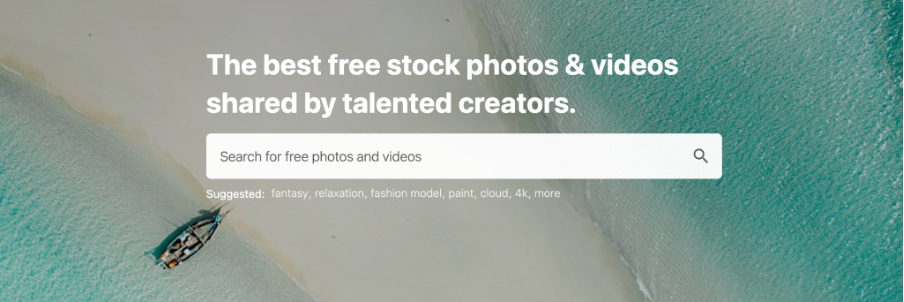
Length of the Content
I can say that one of the controversial issues in the SEO world is content length. Some argue that the longer the content, the better it works, while others disagree.
You can see in the graph below the relationship between content length and organic traffic suggested by research. When you examine the graph, you'll see that the organic traffic starts to decline after the content length exceeds a certain number of words.
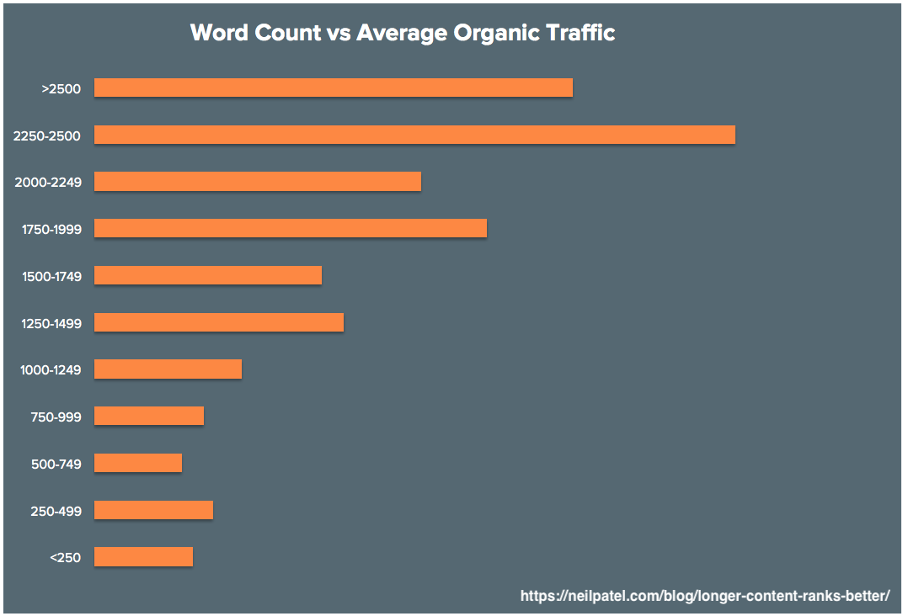
This particular study shows that it doesn't always make sense to write the longest content on a topic. I would suggest you write content whose length would seem natural to users. While determining the content length, you need to analyze the length of the content created by competitors, the search volume of the targeted query, the level of competition in the targeted query, and the content depth. You can decide on the average length of your content based on the findings you will obtain via your analysis.
Finally, it is worth mentioning that Google's John Mueller said that the content length was not a ranking factor.

Paragraph and Sentence Length
There are several points you need to take into consideration if you want your content to be easy to read. One of these points is the length of your sentences and paragraphs. Writing very long sentences or paragraphs will not give the user the opportunity to take a pause while reading. Also, users may find it difficult to comprehend very long sentences. Therefore, make sure that the sentences and paragraphs in the content are not too long and give the users the opportunity to take a pause every once in a while.
Doing Research and Avoiding Misinformation
You need to be definitely sure that the information you provide to users is correct, especially while creating content that may have serious implications on users' lives. For example, if you are giving advice to users about investment or health, the wrong kind of advice may have a direct negative effect on their lives. In such cases, you should be much more cautious. Even while creating content on topics such as vacation options, make sure that the information you provide is correct and up-to-date. Otherwise, users might develop negative feelings about your website or brand.

Presenting Data and Statistics
If you are presenting new information to users in your content, I would recommend you include supporting data and statistics, because providing information on a topic that is supported by data and research statistics will catch the attention of the users. Also, data and statistics will contribute to users' perceiving the content as more authoritative than similar ones, and build confidence in the brand and the website.
Visually Satisfying Content
The first impression the users have of the website has a direct influence on the time they spend on it, making them leave the website right away or spend a little more time. That's why your website and content need to be visually attractive and easy to read. Attractiveness and readability vary according to many factors such as font, font size, background and text color, size, and quality of images. Paying attention to these points will help you attract users to your content.
Spelling Rules and Punctuation Marks
Getting professional support in content production will ensure that you will avoid problems with spelling and punctuation. I mentioned above that I had witnessed several failures in this regard. As far as I am concerned, spelling and punctuation errors are the biggest problems with content that has not been created by professionals. Such errors may result in your brand and your website losing its reputation. Personally, I do not prefer to read content with spelling and punctuation errors, either. And I would not have a very good impression of that website if its content had such errors. Therefore, even if you do not get professional support for content creation, I recommend that you pay attention to punctuation and spelling.
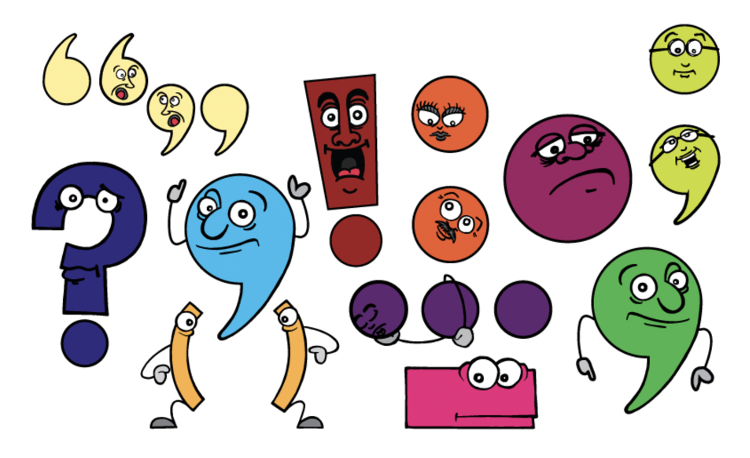
Use of Lists and Tables
Using tables and lists in some of your appropriate content may affect your ranking in a number of ways. For example, it will push the rankings of your low-ranked competitors even further down. Especially in searches made on mobile devices, users will have to scroll to see the second-ranked result. This can give you a competitive edge over your competitors, so I would recommend using lists and tables in your appropriate content. In addition, lists and tables help users find the information they are searching for more easily.
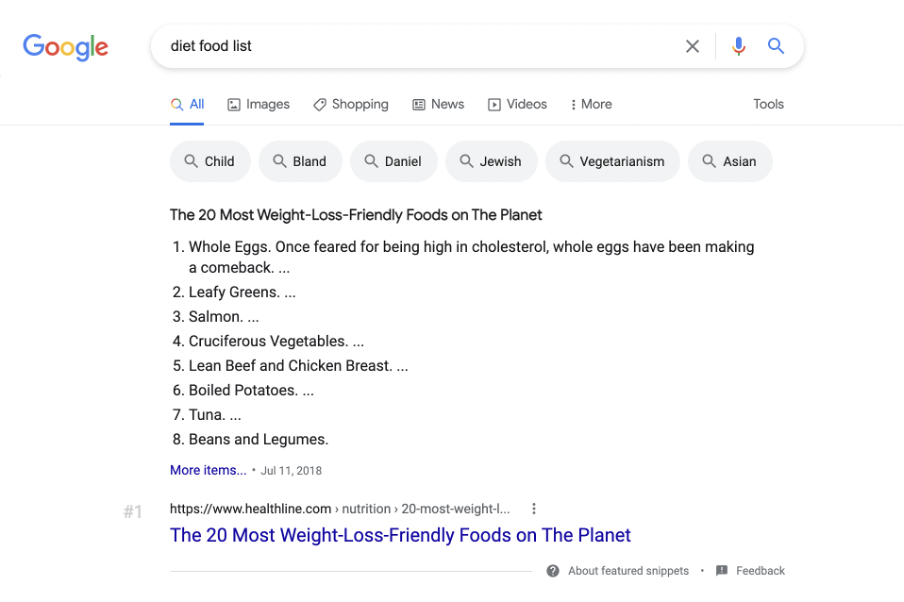
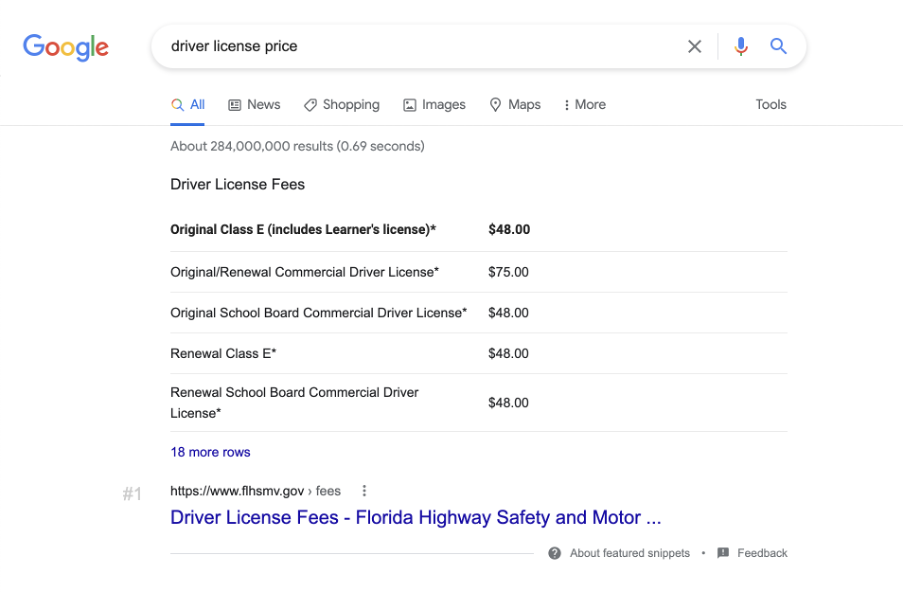
Use of Table of Content
If you're creating comprehensive and lengthy content, it may be difficult for users to find the information they are looking for. I would recommend you to use a table of content you can see below in such cases. In this way, if users want to obtain general information about a topic or need the information provided in one of the sub-titles, they can easily find what they are looking for. Otherwise, some users might think that it will take too long for them to find the information they seek in the content, and they'll leave the website.
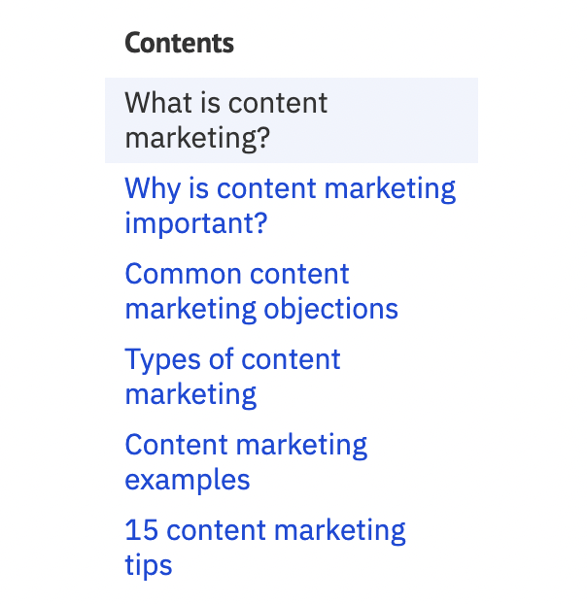
In addition, a table of content can influence the SERP as follows.

Frequently Asked Questions (FAQ)
While conducting keyword research before creating content, if you see that users have different questions about the topic on which you will write, you might create a FAQ page.When you mark up the questions and answers correctly, the FAQ page may affect search results as below. It is worth reminding that it is up to Google whether your page will show up in the search results. However, when you mark up your website and it shows up on the results pages, you can both attract the attention of the users and push the competitors below you in terms of pixels. If you want to take a look at the Google guide on the subject, click here.

-After Creating Content
I mentioned above the important points you should pay attention to before and while creating content. Finally, let's talk about the things to take into consideration after creating content.
Authenticity Check
Let's say that you have created your content by considering the important points mentioned above. The first thing you should do next is to check the authenticity of the content you have created. I recommend you check your content using tools dedicated to that purpose, especially if you did not get professional support in creating them. You can have your content (up to 1000 words) crawled for authenticity for free by using this tool.
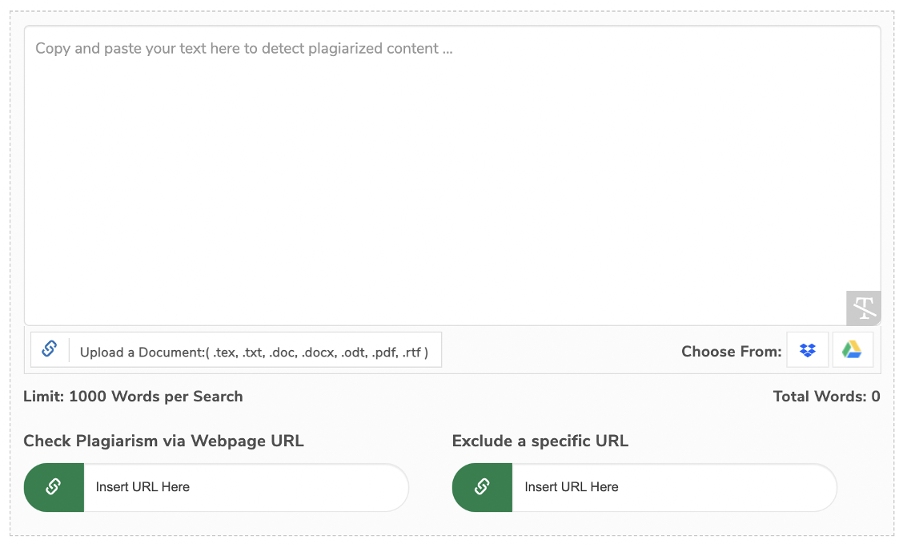
Title Tag
You need to choose your title tag wisely while posting your content, as it is one of the important ranking factors. Below are the points you need to take into consideration while creating a title tag:
- It should be original
- It should summarize the content correctly
- It should match users' intent
- It should evoke curiosity and the urge to see the content
- It should contain the targeted keyword

It should not exceed a certain number of characters so that it appears completely on the results page, so it is best if it is 60 to 65 characters long.
Description Tag
After deciding on the title tag, you should optimize your description tag correctly, too. Although the description tag is not a direct ranking factor, it can affect the click-through rate if optimized properly. Below are the things to take into account while creating the description tag.
- It should be original
- It should summarize the content correctly
- It should give information about the content
- It should evoke curiosity and the urge to see the content
Since the searched keyword is written in bold on the results pages, it should contain the targeted keyword.
- It is best that the description tag is between 120 and 150 characters long so that it does not get cut with three dots or Google does not show a random text on the page as the description.

Heading Tags and Content Hierarchy
You need to mark up the heading tag correctly in line with the content hierarchy. You can mark up the main title with the H1 tag, the sub-title with the H2 tag, and the further sub-titles with H3 and H4. Here are the other points you need to take into consideration about heading tags:
- H1 tag should summarize the content as the main title
- There should be at least one H1 tag
- No more than one H1 tag should be used
- The H1 tag should not be too long or short
- The H1 tag and sub-titles should be marked up in line with the content hierarchy
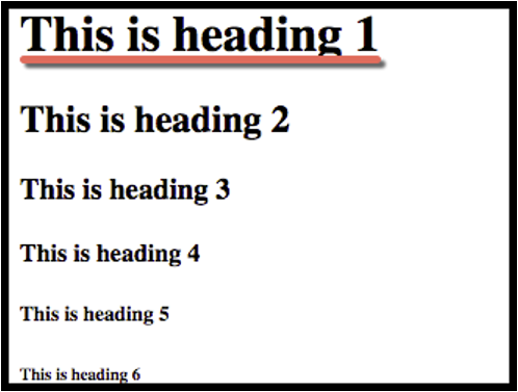
URL Structure
Before you publish your page, you also need to create your URL correctly. Below are the things to take into account while creating the URL of your page:
- You should not use Turkish characters
- It should summarize the content as well as provide information about it
- It should be created in lower cases
- You should not use spaces and separate words using "-"
- If possible, you should use the targeted keyword in it
Internal Linking
If you have other content related to a given topic, you can link your content to them. By doing so, you will be able to attract both search engine bots and users to your other pages, making sure that the users spend more time on your website and visit other parts of it.

Page Speed
Research shows that a significant number of users leave websites that do not load in a short time. Therefore, it is a good idea to check your page speed and ensure that it loads as quickly as possible. Especially if you are going to use high-resolution images on the page, you can optimize these images by using tools such as Squoosh.
Distracting and Disturbing Ads
Advertisements or pop-ups on the content page can disturb users when they are not placed well, which may lead users to have a bad experience and leave the website. Also, it will be natural for users to leave the website when they encounter too many advertisements or pop-ups that they have difficulty closing. Therefore, it is best to prioritize user experience while placing ads and pop-ups on the content page.
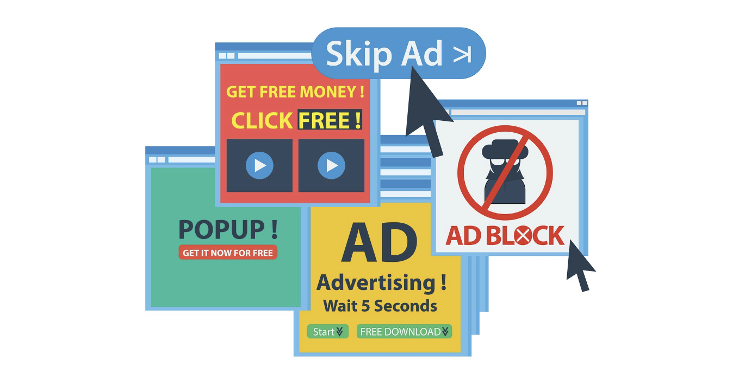
Mobile Experince
According to StatCounter's May 2021 data, the rate of mobile device users in the world is 55.31%. You can find the details and the graphic here.

Indeed, the importance of mobile experience is increasing day by day. Today, most websites receive a significant portion of their traffic from mobile devices, with some exceptions. While presenting your content, you should keep in mind that users will also visit your content page and website on mobile devices; so, you should do your best to offer them a good mobile experience.
Google announced in 2016 that it had started experimenting with mobile-first indexing. You can use our Mobile First Index Checker to check whether your content pages are suitable for mobile-first indexing.
Influencing Users
In the introduction, I mentioned that it's important to decide on a purpose before creating content. If your purpose is to promote products or services, you also need to focus on how to influence users. Here, the ideal scenario would be to mention your product or service in a natural manner, without making the users think that it is advertisement content. However, if you try to force the users into buying behavior or to direct them to your product pages, it may not result as you expected. Therefore, your content should address the product/service in a natural manner and not persistently try to steer the users.
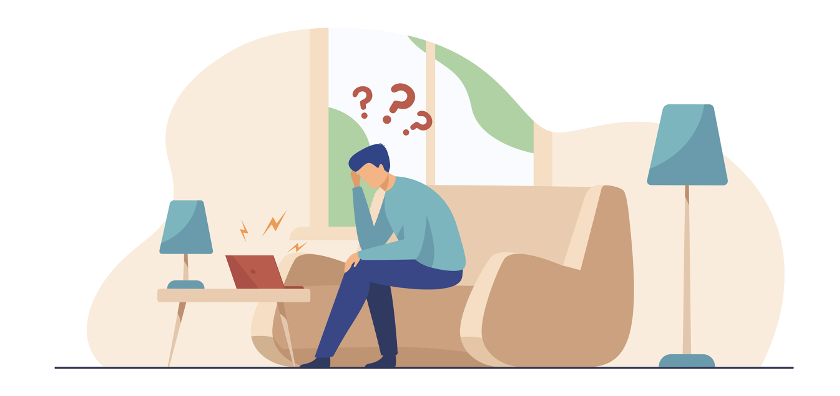
User Comments and Social Media Posts
While creating your content, you can allow the users to reach you and each other by commenting on your content. You can ask users to express their opinions on the content in the comment section, or you can choose different content topics that they would comment on without being asked. Such content will give the users the itch to share the content, too. Users sharing the content both with their loved ones and via their social media accounts will contribute to the performance of your website.

Cannibalization Check
I would suggest you make cannibalization checks regularly, especially if you have much content on similar topics and usually create content on a specific topic. To explain briefly, targeting a keyword with more than one page is called keyword cannibalization. In such cases, Google may not decide which page to list in the search results of the keyword, or it may list two pages at the same time, which means that you create a competitor to yourself out of the blue. If you want to learn more about the problem of keyword cannibalization and its solution, click here.
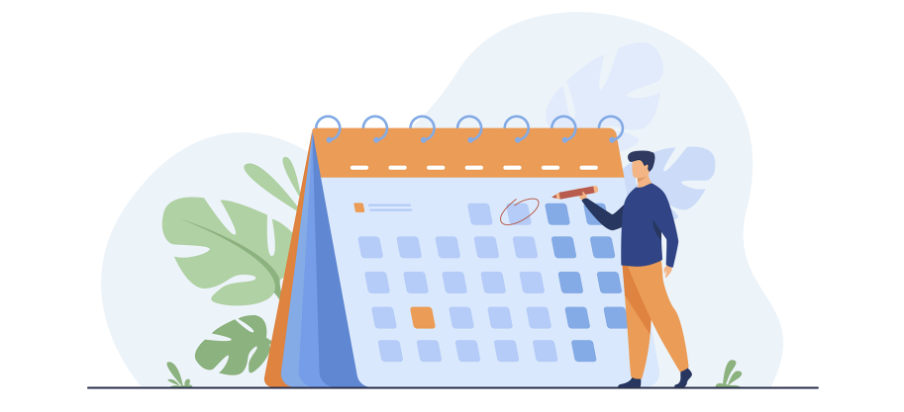
Technical Checks
You may need to regularly go over your previous content, because sometimes the 404 status code may appear on these pages due to technical problems. Therefore, I would recommend you crawl your website with crawling tools at certain intervals and determine your content pages where the 200 error page does not appear due to different problems. You can then use our tool, Carbon, to decide on the pages to which the 404 error pages will be redirected.
Order and Continuity
As in almost everything, order and continuity are among the most important concepts in content creation. In other words, I recommend that you create a content calendar for yourself and publish content regularly at certain intervals. It would be wrong to assume that you will attract traffic to your website by posting some content. It will take some time for Google to trust your website, especially if your website is new. However, when you create quality content by paying attention to the points I mentioned above, you can be sure that Google and users will give you exactly what you want, sooner or later.
Conclusion
In this article, I tried to address the important points that you should pay attention to while creating SEO-friendly and quality content. I hope it's been helpful. And I hope you will be able to create lots of quality content that will bring your website plenty of organic traffic.

















